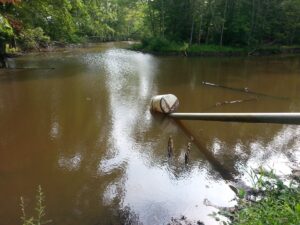Please Join us for an Interactive Discussion on Orchard Soil Fertility and Tree Fruit Nutrition. Expert Panelists Dr. Robert Crassweller, Extension Specialist, Horticulture, Penn State Uni., Dr. Joseph Heckman, Extension Specialist, Soil Fertility, Rutgers NJAES. and Dr. Megan Muehlbauer, Extension Agent, RCE of Hunterdon County will be discussing orchard soil fertility and tree nutrition. [Read more…]
Communicating the Value of COVID-19 Vaccines With Your Farm Employees
CDC COVID-19 Vaccine Posters available in multiple languages – “Vaccines (shots) are one of the tools we have to fight the COVID-19 pandemic.”
In an effort to increase participation in the COVID-19 vaccination program among farm workers, the Centers for Disease Control (CDC), through the national Extension Foundation, is working with Cooperative Extension across the country to help spread the word about the importance of getting vaccinated. Rutgers Cooperative Extension Director Brian Schilling has enlisted a team of County Agents and Specialists to answer the call from the CDC to participate in this EXCITE program. Through a variety of communications channels we will be providing informational posters and other educational materials in several appropriate languages that you can hand out or post in locations where your workers can easily read them (like on or near your Worker Protections Standards bulletin boards or in your labor camps).
“Vaccines (shots) are one of the tools we have to fight the COVID-19 pandemic” posters from the CDC are now available on the COVID-19 page of the Rutgers NJAES On-Farm Food Safety website <https://onfarmfoodsafety.rutgers.edu/covid-19-information/> with the direct links to these multiple language editions:
You can also share this Spanish language video <https://wecandothis.hhs.gov/un-rayo-de-esperanza> from the US Dept. of Health and Human Services with your workers to help explain where they can get more information about COVID-19 vaccines. There are several other informational videos available at https://wecandothis.hhs.gov/filter/format/Video, as well as posters/fliers from https://wecandothis.hhs.gov/filter/format/Poster%20%E2%80%93%20Flyer (mostly English), and factsheets at https://wecandothis.hhs.gov/filter/format/Fact%20Sheet.

Preparing Orchards Against the Frost – Low Tech Strategies
Frost is common in the north-eastern US, however, frost events during bloom, specifically in orchard crops can be economically devastating. Often the cause is a few hours of temperatures below the injury threshold temperature for the developing buds as cooler nights result in the rapid loss of thermal energy. Fortunately, there are several passive methods or low-tech strategies, that can help maintain a slightly higher orchard floor temperature, has the potential to prevent substantial crop loss. [Read more…]
Evaluate Your Wine Grape Planting Material Before Planting
Spring is the best time to plant new grapevines in New Jersey. You may be receiving ordered grapevines in the coming days or weeks. 1You must ensure that your planting material is healthy enough to avoid problems after planting. While it is a good idea to plant grapevines as soon as they arrive, inspecting the physical attributes of your ordered vines before planting may save you some troubles later. Nurseries send planting material on pre-determined dates hence; you should have enough time for a detailed inspection. [Read more…]
Recordings of Webinars – Ask the Expert Series Orchard Edition
Please use the below links to view or listen to the recordings from the first two sessions of Ask the Expert – Orchard Edition.
March 19
Tree Fruit Growers Meeting – I: https://go.rutgers.edu/n7v5agck
- Peach Rootstock Performance in Recent Trial
Dr. James Schupp, Professor of Pomology, Penn State Uni.
Tactics for Improved Weed Management in Orchards
Dr. Thierry Besancon, Extension Specialist, Weed Science, Rutgers NJAES
March 24
Tree Fruit Growers Meeting – II: https://go.rutgers.edu/wu2zgt6y
- 2021 Tree Fruit Diseases to Prepare for.
Dr. Norman Lallancette, Extension Specialist, Tree Fruit Pathology, Rutgers NJAES
Dr. Kari Peters, Tree Fruit Pathologist, Penn State Uni.
What water test do you need and how often do you need to do it?
FSMA Produce Safety Rule compliance, third party audit standards, and general best practices all include the need for irrigation, harvest, cleaning, sanitation, handwashing, pesticide application, drinking and postharvest water testing. Not all tests are the same, but all cost money, so make sure what your paying for meets your needs.

Here are the questions we commonly get from produce growers and answers that we hope you find helpful:
What water test do I need for a water source that is used only for irrigation of crops and/or pesticide applications?
– This water should be tested for generic E. coli, acceptable results give you a number answer of 126 CFU (colony forming units) or MPN (most probable number) or less. You do not want a presence/absence (P/A) test. A P/A test would not be sufficient for a third-party audit requirement or the FSMA PSR.
-Most water testing labs on the NJ Water Testing Lab Map (link below) offer the EPA 1603 analysis, which satisfies both the FSMA PSR anticipated requirements and third-party audit requirements.
-Other acceptable analysis methods are described on the
Produce Safety Alliance Water Analysis Method Requirement fact sheet.
-Well water sources used for irrigation should be tested once a year.
-Surface water sources should be tested at least three times during their period of use, ideally when starting irrigation, mid-season, and close to harvest. Surface water sources include irrigation ponds (spring fed, well fed, or other ponds), streams, rivers, and other bodies of water that are exposed to the surface.
-Municipal water sources used for irrigation should have a copy of the water testing record on file. These testing records are often found online or are available upon request. Made sure that generic E. coli is listed on the report.
What water test do I need for a water source that is used during the harvest process? Handwashing water? Cleaning and sanitizing use? Postharvest washing and cooling water?
[Read more…]
